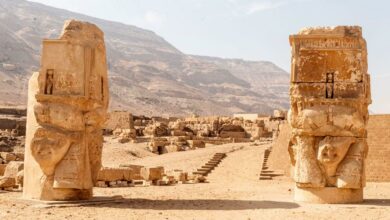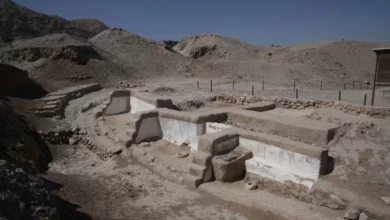Two youth-led environment groups yesterday hosted in downtown Cairo a photo exhibition featuring Egyptian landmarks and natural scenery to celebrate UNESCO’s World Heritage Day.
The exhibition, which featured over 20 photos shot by different Egyptian photographers, was held to highlight the importance of “getting back in touch with nature,” according to Ahmed el-Dorghamy, a member of Egyptian NGO Nahdet el-Mahrousa’s “Green Arm”, which co-organized the event.
“We really think that enjoying the environment is the best way to appreciate it. People are giving up–simply traveling from their car, to their homes, to work,” said el-Dorghamy. “We’re taking time to talk about World Heritage Day to remind people that the environment is beautiful.”
UNESCO’s World Heritage Day, first launched in 1983, aims to raise public awareness about the diversity of cultural heritage and draw attention to ancient sites around the world. The idea is to give exposure to international efforts to preserve these sites and increase awareness of the importance of supporting such efforts.
One simple way to show support on World Heritage Day is to visit special monuments and sites, said Omnia Amr, managing director of Donya Deesee, the events management and promotion company that co-organized the exhibition.
In Egypt, six cultural sites–Abu Mena, Ancient Thebes with its necropolis, historic Cairo, Memphis and its necropolis including the pyramid fields from Giza to Dashur, Nubian monuments from Abu Simbel to Philae, and the area centering on Saint Catherine’s Monastery–as well as one natural site–Wadi el-Hitan (Valley of the Whales)–are listed on the World Heritage List, which includes 890 sites worldwide considered to have “outstanding universal value”. Thirty-one additional sites in Egypt are under review for approval by the World Heritage Committee, which has the final say on whether a property is included as a World Heritage Site.
After mingling and viewing the photos, the small group of attendees were given a 30-minute photo-presentation on Lake Qaroun, one of Egypt’s most cherished natural landmarks, located in Fayoum, 80km southwest of Cairo.
Although not on the World Heritage List, Lake Qaroun is of great importance to the culture and ecology of the area, said Dr. Kohar Garo, professor of zoology at Cairo University and a member of the NGO Nature Conservation Egypt, who gave the presentation.
“While Fayoum is one of Egypt’s most beautiful and richest governorates in terms of natural resources, it is also the poorest,” Garo said.
The Lake Qaroun Protected Area, which attracts approximately 100 different bird species including greater flamingos–the rose-colored and most widespread species of the flamingo family–is listed as an Important Bird Area (IBA) by BirdLife International, a global partnership of conservation organisations that strives to protect birds and their habitats.
Qaroun Lake, once made up of fresh water, is now as saline as the sea due to heavy pollution, according to Garo. Construction plans aimed at tourism in the surrounding area are deteriorating its condition further, making it key that locals be educated.
“Sustainability is now the key to everything,” said Garo, who shared her experiences during an 18-month educational project she led which aimed to educate youth and raise awareness in the area.




